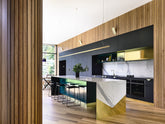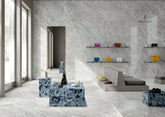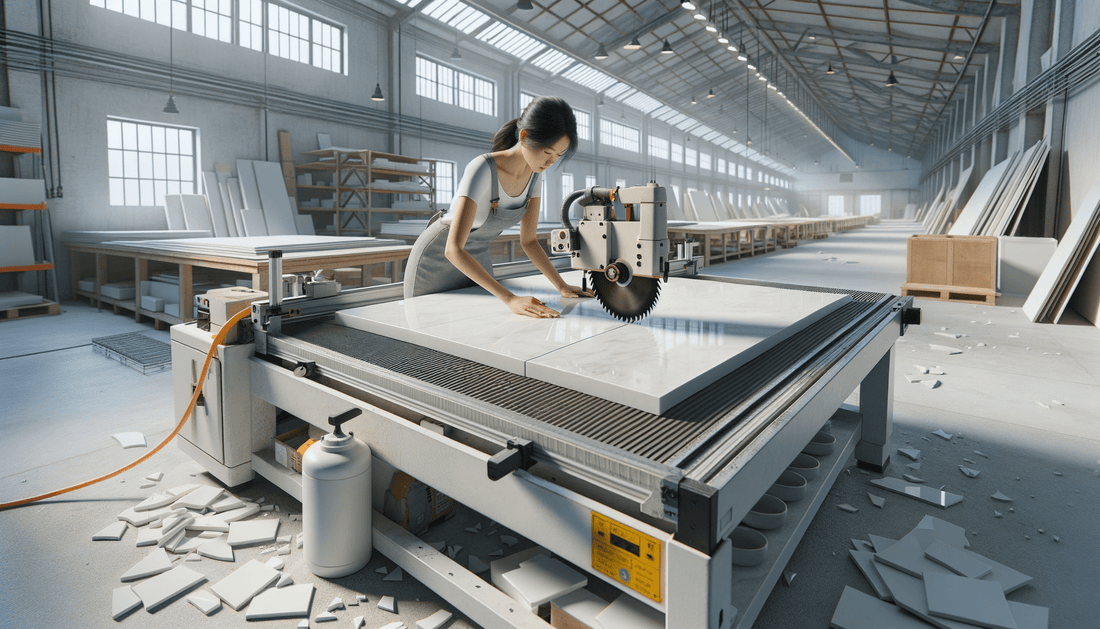Are Porcelain Slabs Hard to Cut? What Every Homeowner and Designer Should Know
Porcelain slabs have rapidly gained popularity in modern luxury design, prized for their sleek appeal, durability, and versatility in high-end projects. Whether you are a homeowner planning a refined kitchen renovation or a seasoned architect designing commercial interiors, using porcelain surfaces can elevate any space. However, a commonly asked question remains: are porcelain slabs hard to cut? Let's explore everything you need to know about working with this cherished material—from understanding its composition to the tools required for precise fabrication. We'll also uncover exclusive offers from Zicana Boutique that help you bring your dream surfaces to life.
Understanding Porcelain: Why It Requires Precision Cutting
Porcelain is a manmade material created by firing refined clay at exceptionally high temperatures, resulting in an ultra-dense, nonporous surface. This extreme hardness and low absorbency make it an ideal option for countertops, flooring, wall cladding, and even furniture. But these same characteristics also make cutting porcelain slabs more difficult than softer stones like marble or limestone.
To achieve clean, chip-free edges, cutting porcelain typically requires specialized equipment, advanced techniques, and experienced craftsmanship. Poorly executed cuts can result in cracks, poor fitment, and aesthetic flaws that detract from the luxurious finish you expect from a premium product like those in the Porcelain Slabs Collection.
Factors That Make Cutting Porcelain Challenging
While not impossible to work with, porcelain presents unique challenges compared to natural stone or engineered quartz. Here are factors contributing to its complexity:
- Hardness of material: Porcelain ranks at or above 7 on the Mohs hardness scale, making it harder than granite and quartz.
- Thickness of slabs: Large-format slabs, often 6mm to 20mm thick, require different cutting blades and techniques depending on the thickness and installation type.
- Brittleness: While hard, porcelain can be brittle if not supported properly during cutting. Precision is key in maintaining structural integrity.
- Fully vitrified surface: The vitrification process creates a very tough glaze that resists traditional cutting tools designed for softer stone materials.
Because of these factors, cutting porcelain is best left to professionals or craftsmen deeply familiar with porcelain fabrication—especially when functional and visual quality is paramount.
Tools and Techniques Used to Cut Porcelain Slabs
For the cleanest, most accurate results, specialized wet saws with diamond-tipped blades are standard for cutting porcelain. Here’s a look at the most common tools used by tradespeople:
- Bridge Saw with Diamond Blade: Ideal for large-format slabs and cutting straight lines with minimal chipping.
- Water Jet Cutting: Offers unmatched precision and is perfect for complex or curved designs, such as cut-outs for sinks or decorative inlays.
- Angle Grinder with Diamond Discs: Effective for detailed edge work but typically used in combination with other tools.
Through these advanced tools, the right artisan can shape porcelain to fit a wide range of bespoke applications. Zicana Boutique even offers Made-to-Measure Custom Countertops crafted from porcelain and other luxury materials—a perfect solution for tailored projects where precision is critical.
Porcelain vs. Other Slabs: How It Compares
To fully appreciate the intricacy of cutting porcelain slabs, it's helpful to understand how this material compares to others. Here’s a quick comparison to some common surface types:
- Marble: Softer and easier to cut but more prone to staining and scratching. Explore our stunning Marble Slabs Collection.
- Granite: Also hard and requires diamond tooling but offers more thermal shock resistance than porcelain. Browse the Granite Slabs Collection.
- Quartz: Easier to fabricate using conventional stone tools and more forgiving during installation. See options in the Quartz Slabs Collection.
- Sintered Stone: Similar to porcelain in composition and cutting demands. Ideal for outdoor applications. Discover the Sintered Stone Slabs Collection.
For professionals and homeowners alike, knowing the difference helps guide investment decisions, fabrication lead times, and installation planning.
Cost Considerations & Exclusive Savings on Porcelain Slabs
Because of its cutting complexity and transport requirements, installing porcelain is often more labor-intensive than working with other surfaces. But the return on investment is undeniable: resilience, beauty, and low maintenance make porcelain a mainstay in both residential and commercial design.
To help you make the most of your project budget, Zicana Boutique proudly offers our Exclusive Offers Collection, featuring hand-selected porcelain and engineered surfaces at extraordinary prices. Plus, first-time customers can Use Promo Code WELCOME100 for $100 off any order over $1,000, making it easier to elevate your space without compromise.
FAQs About Cutting and Using Porcelain Slabs
Can porcelain slabs be cut without chipping?
Yes, but only with the right tools and techniques. Diamond-tipped blades, slow feed rates, proper supports, and experienced handling are key to preventing chips and uneven edges during the cutting process.
Is it possible to cut porcelain slabs at home?
While DIY enthusiasts might be tempted, it’s not recommended due to the demands of specialized equipment and the material’s hardness. Relying on professionals or purchasing Made-to-Measure Custom Countertops ensures premium results with zero risk.
What thicknesses are available for porcelain slabs?
Zicana Boutique offers porcelain slabs in various thicknesses ranging from ultra-thin 6mm options ideal for wall cladding, to 12mm and 20mm slabs designed for heavy-use countertops and tabletops.
Are porcelain and sintered stone the same?
While closely related, sintered stone is a broader category that includes porcelain. Both are manufactured with extreme heat and pressure, but sintered stone may contain additional minerals and technologies designed to enhance performance for specific applications. You can compare both in our Porcelain Slabs Collection and Sintered Stone Slabs Collection.
Discover the Art of Porcelain With Zicana Boutique
So, are porcelain slabs hard to cut? Yes—but when in expert hands, the results are transformative. Whether you're aiming for timeless kitchen countertops, spa-like bathroom surfaces, or dramatic fireplace surrounds, Zicana Boutique offers unparalleled porcelain selections and tailored services to bring your vision to life.
Explore our exquisite Porcelain Slabs Collection or reach out to our experienced team for custom advice on selecting the ideal surface for your next design endeavor. And don’t forget to visit our Exclusive Offers Collection and Use Promo Code WELCOME100 for $100 off any order over $1,000—your journey to sophisticated surfaces begins here.



















